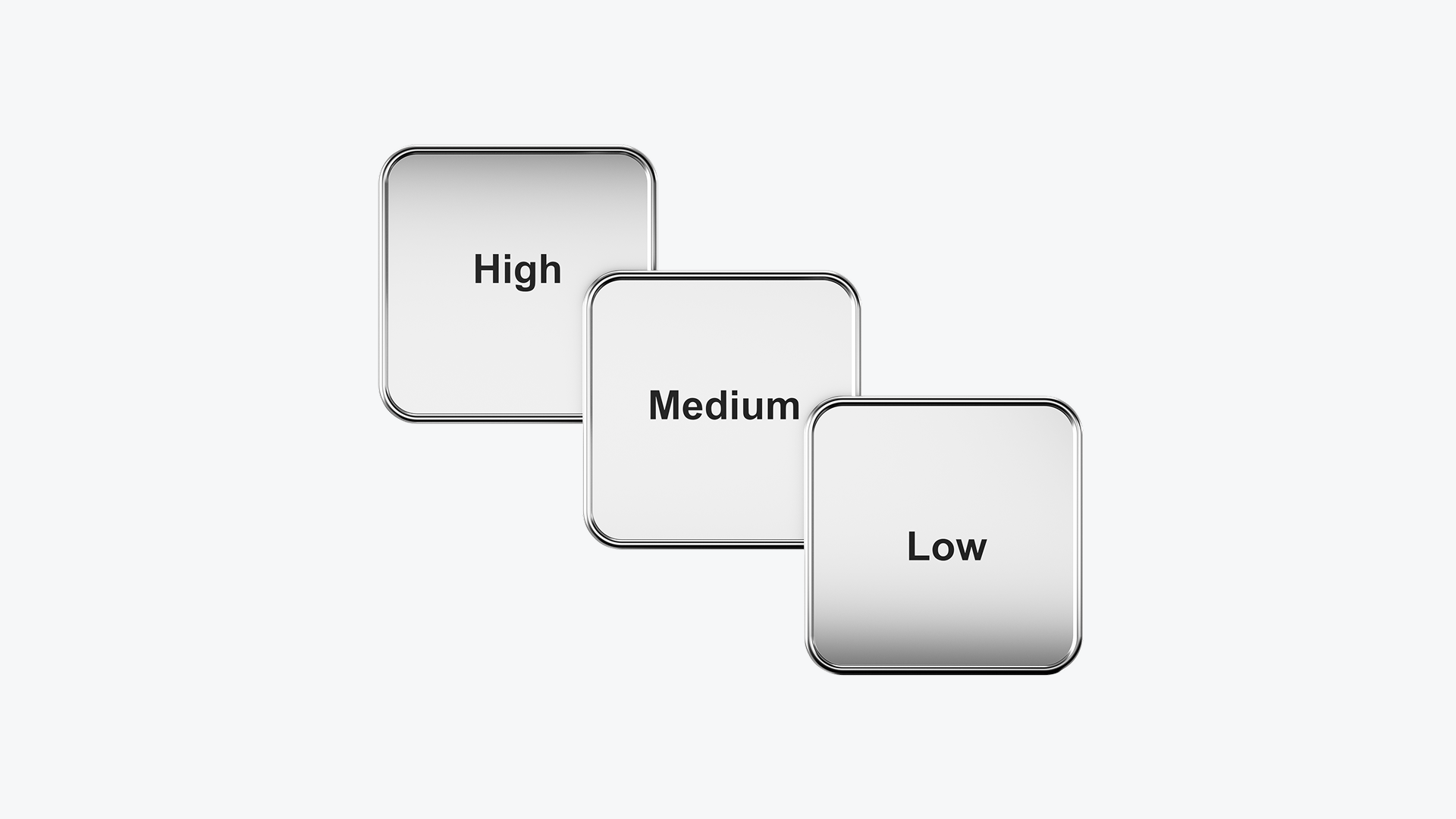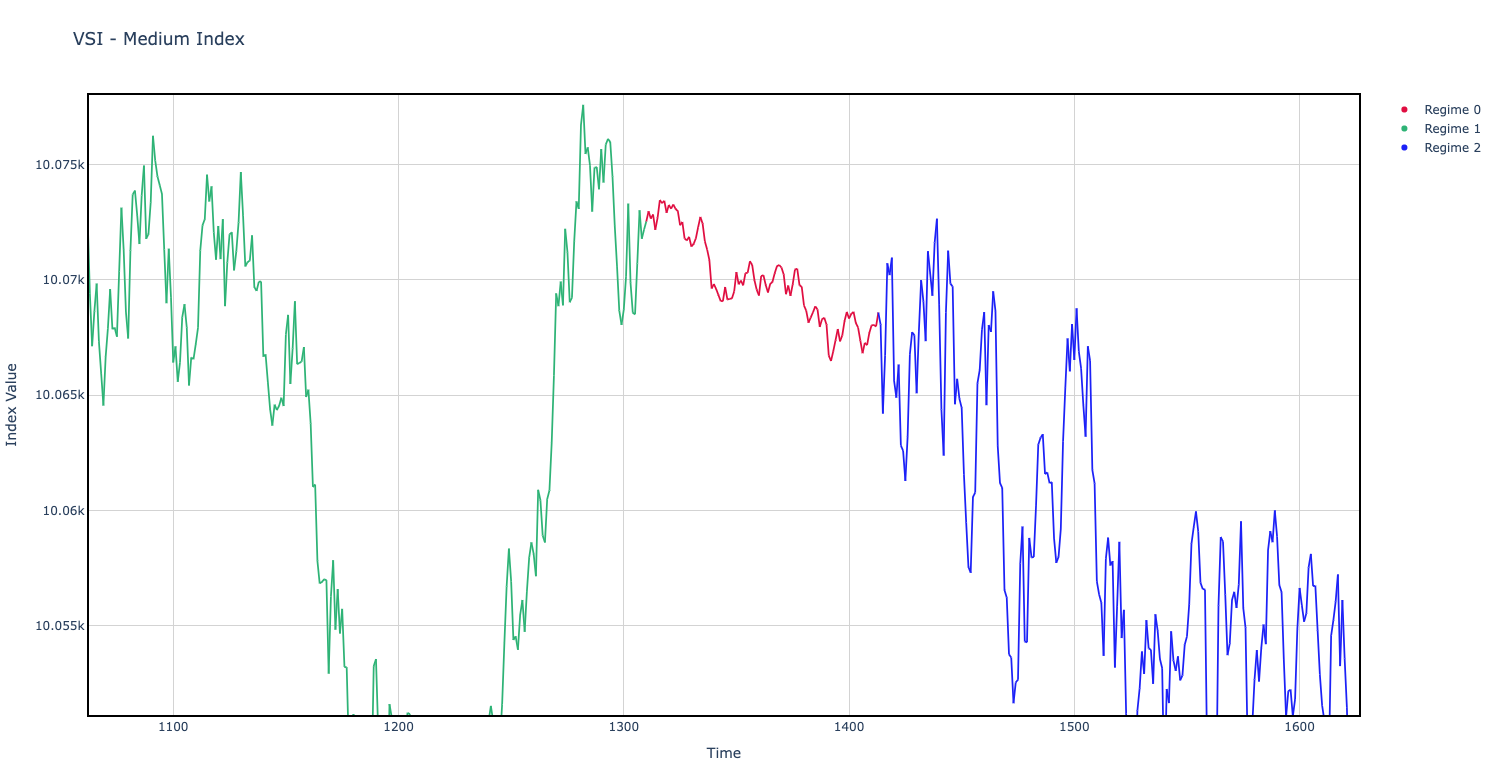
The Volatility Switch Index (VSI) is an innovative synthetic index that brings a new dimension to trading by closely simulating real-world market behaviour. Unlike traditional volatility indices, VSI features clearly defined regimes—low, medium, and high volatility—that change dynamically over time. In this guide, we’ll explore what VSI is, how it works on Deriv’s platforms, the advantages of trading VSI, how it differs from other volatility indices, strategies for managing risks, and tips to get started.
What is the Volatility Switch Index (VSI)?
VSI, or Volatility Switch Index, is a synthetic market index designed to emulate real financial markets, particularly how they shift between periods of calm and turbulence. Over time, VSI randomly switches among three distinct volatility regimes:
- Low volatility
- Medium volatility
- High volatility
Each regime persists for a specific period, but transitions are random and unpredictable—just like in actual markets. This characteristic gives traders the ability to observe, react to, and strategise around changing levels of volatility within a single trading product.

How does VSI work?
At its core, VSI uses advanced algorithms to create market-like conditions by randomly shifting between volatility regimes. Here’s how it operates:
- Regime duration: Each regime (low, medium, or high) lasts for a set time, but the switch to the next regime occurs randomly, making it impossible to predict exact timings.
- Dynamic spread Model: The price spread adapts in response to each regime, providing a realistic trading challenge.
- VSI variants: Traders can select between three variants—VSI Low, VSI Medium, and VSI High—each with its own average volatility and regime durations.
This structure encourages traders to develop skills in identifying and responding to volatility changes, rather than simply trading the direction of the market.

Advantages of trading VSI indices on Deriv
VSI indices offer several unique benefits over both real market indices and other synthetic indices:
- Enhanced realism: VSI’s regime-switching behaviour mimics the ebb and flow of actual financial markets, making it highly relatable.
- Strategy development: Traders can create, test, and refine strategies that adapt to different market volatility environments within a single instrument.
- Educational value: VSI is a valuable tool for learning how volatility impacts market performance and risk.
- Accessibility: Like all synthetic indices on Deriv, VSI is available 24/7 and independent of real-world market events.
- Opportunity for regime-based trading: Instead of just targeting price direction, you can develop trades based on changes in volatility, exploring more advanced analytical techniques.
VSI vs. traditional volatility indices
Before we explore the unique features of VSI, it’s helpful to understand the concept of volatility indices and how they function as synthetic assets designed to simulate price movements independently of real-world events. Volatility indices are a cornerstone for traders seeking continuous, predictable market environments and form the basis of many strategies and products offered on Deriv. To gain a deeper understanding of these instruments, check out our comprehensive guide to volatility indices.
While all synthetic indices on Deriv aim to offer uninterrupted, independent trading opportunities, VSI stands apart in the following ways:
- Defined Regimes: Unlike constant-volatility indices (e.g., Volatility 75 Index or V100), VSI’s clear low/medium/high volatility periods provide richer scenario analysis.
- Market Simulation: Regime switching closely follows real markets, making the trading experience more authentic.
- Dynamic Spreads: Transaction costs adapt to the current regime, unlike the fixed structures of traditional volatility indices.
Traders seeking more life-like market behaviour, or those building and testing algorithmic trading models, may find VSI the most compelling choice among Deriv’s synthetic indices.
Risks & risk management for trading VSI Indices
With increased realism comes increased need for risk awareness. Here are some essential tips to keep in mind for navigating VSI’s changing volatility:
- Be Prepared for Swings: Volatility can increase suddenly—a high regime means larger (positive or negative) moves.
- Adjust Position Sizing: Consider reducing position sizes during high volatility to manage exposure.
- Use Stop-Loss Orders: Protect yourself against sharp moves by setting stop-loss levels appropriate to the current regime.
- Practice with a Demo Account: Start with virtual funds to experience the regime switches and test your approaches.
The Volatility Switch Index (VSI) on Deriv offers a cutting-edge opportunity to trade in conditions that closely mirror real-world markets, allowing you to sharpen your strategies for changing volatility regimes. Whether you are a technical trader, an algorithmic enthusiast, or someone keen to develop a deeper understanding of market dynamics, VSI provides a unique edge for your trading toolkit. Ready to explore this innovative index? Log in to your Deriv account now, try VSI on a demo account, and discover the difference adaptive trading can make.
Quiz
Which of the following is unique to the Volatility Switch Index (VSI) compared to traditional synthetic indices?










